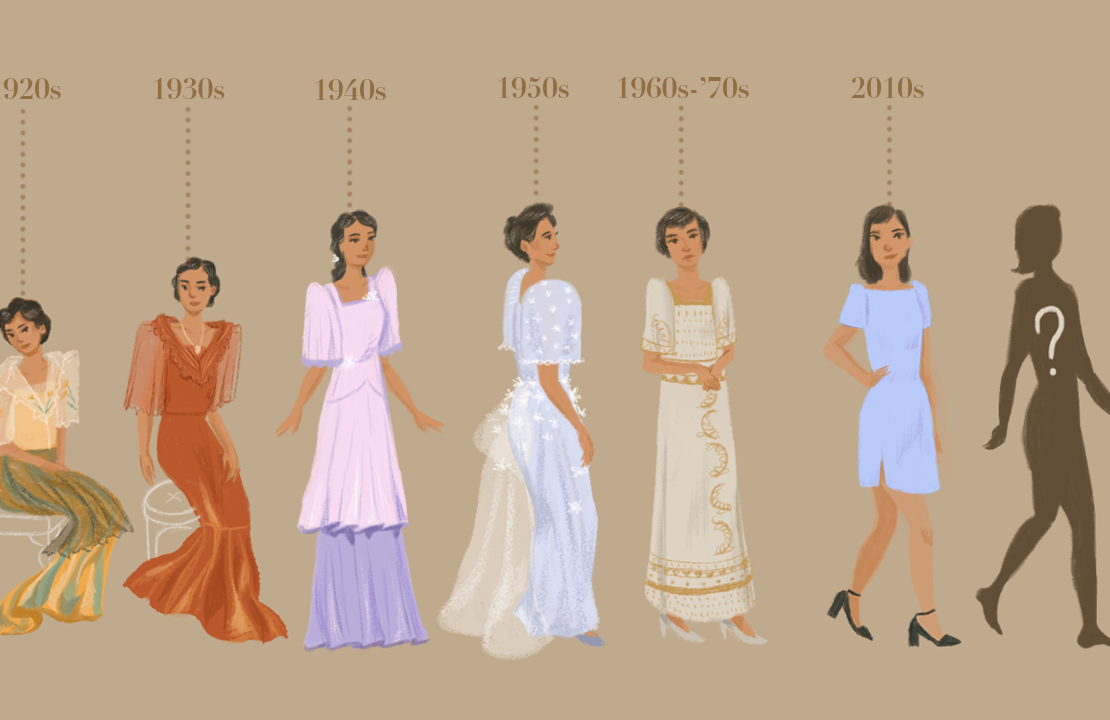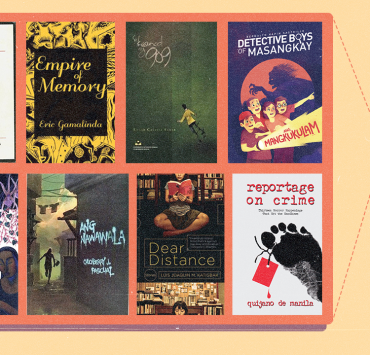A lot has changed since the first staging of TernoCon. The convention and contest, the brainchild of Gino Gonzales together with local lifestyle brand Bench and the Cultural Center of the Philippines (CCP), took off from the obsolescence of the terno and made it its mission to reintroduce younger people to the craft of making the traditional garb.
Unlike last year, this November, no such thing is taking place—at least not yet. The TernoCon turned out to be a biennial event thus the next one is not due until next year, culminating in January 2020. 14 new finalists from all over the country with varying backgrounds have already been selected out of 50-plus entries and trained by three new mentors: Cebuano designer Philip Rodriguez, London-based designer Lesley Mobo, and experimental designer Ivarluski Aseron along with returning head mentor Inno Sotto.

If last year’s convention saw formal terno and balintawak categories, TernoCon 2020 allows for more creativity for designers as they are free to experiment with the silhouette of the Filipino dress through a three-piece collection.
Marlon Tuazon, last year’s winner who hails from Pampanga, will present a 10-piece collection as well, together with Rodriguez, Mobo, and Aseron.
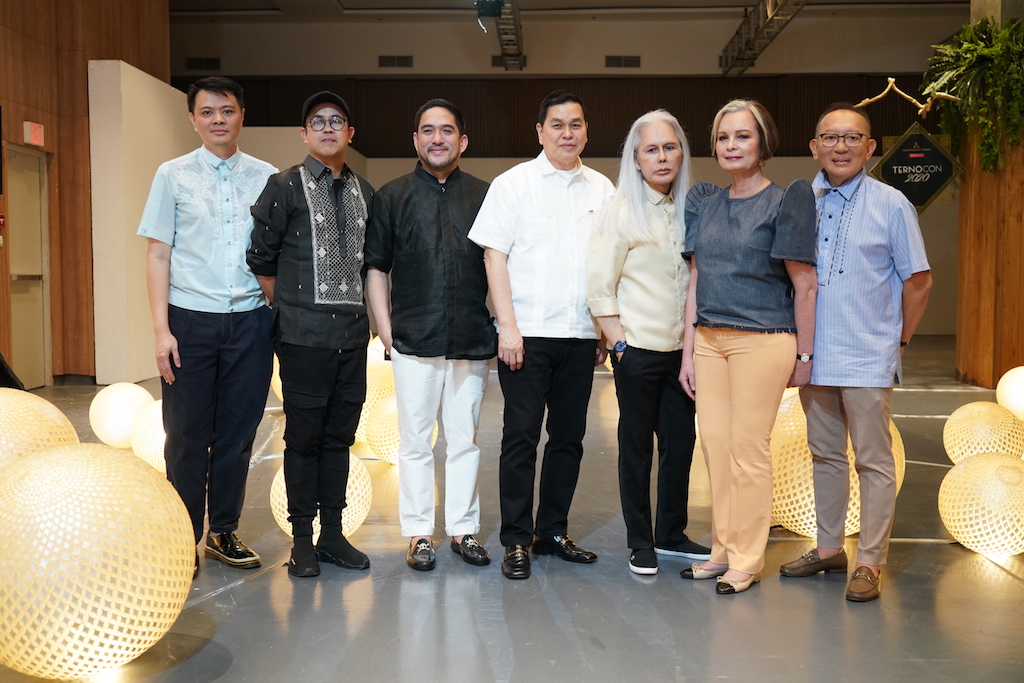
Out of the baul
The terno itself, the subject of this project, is relatively out of the dark and enjoying quite a moment in the popular culture, thanks to contemporary designers who’ve churned out casual and approachable versions and the recent celebrity ball by a local artists agency.
“You could just be browsing through your Instagram feed and you will see contemporary, casual terno designs made for every day.” That’s Gonzales, who’s approached everyone at every table during the launch to introduce next year’s finalists. “Is that a bad thing?” I asked. “No. If anything, we are happy at least more people are now familiar with it.”
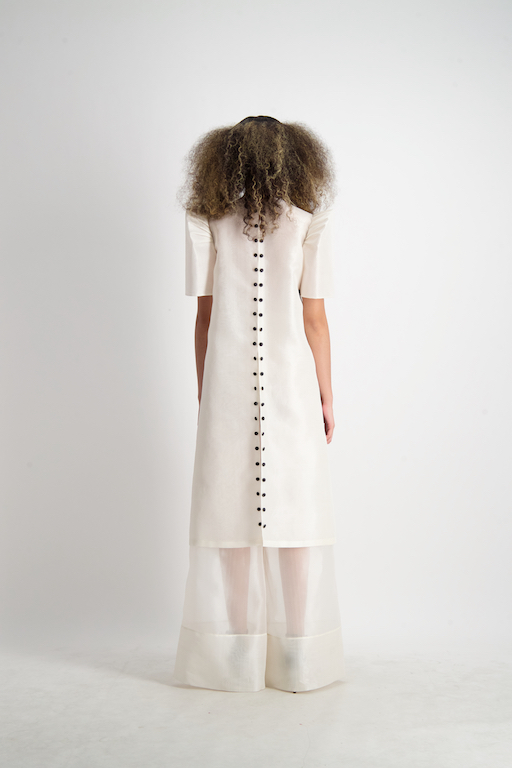
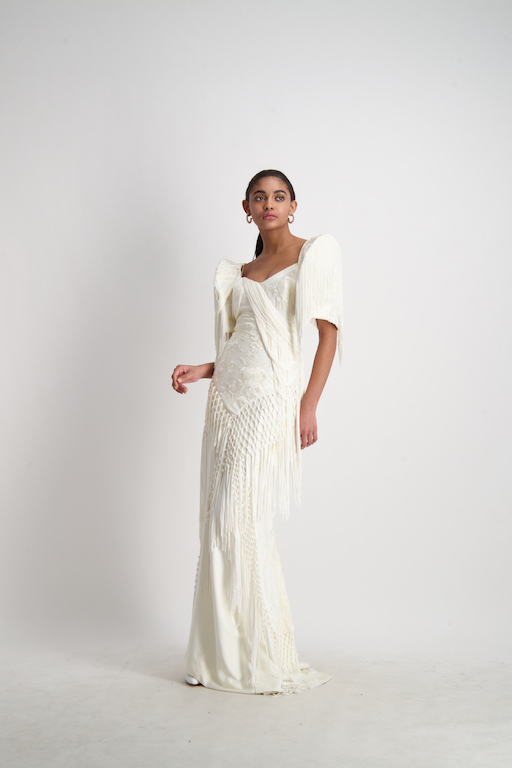
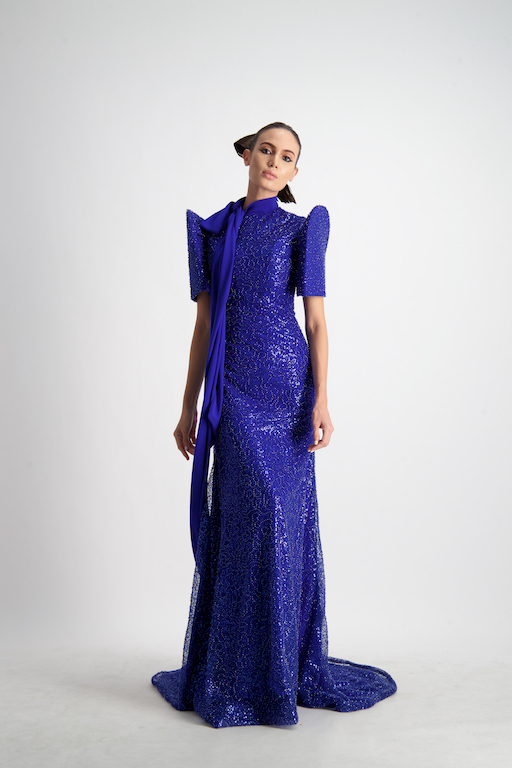
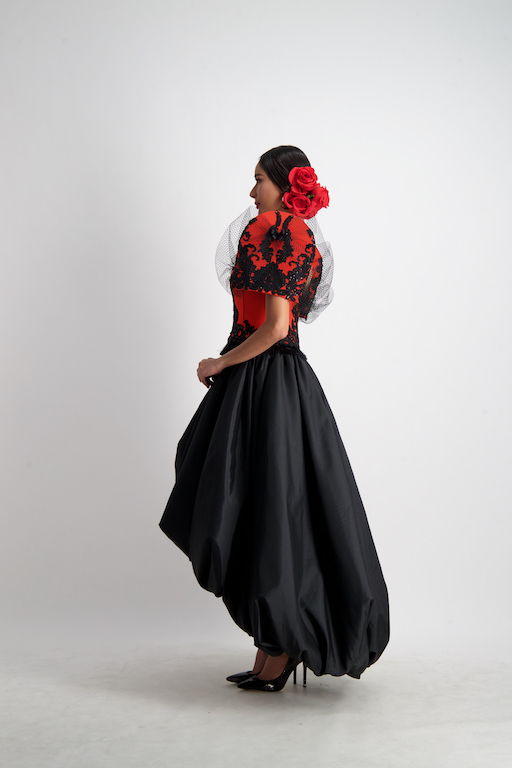
Amid the air of grandiose made more dreamy by an assemblage of embellished and lit orbs on the runway, and Gonzales’s own humility, it’s easy to overlook the fact that he is an expert in the field of Filipiniana—an umbrella term he said is often misused to pertain to specific items of clothing—that is next to being a multi-awarded scenographer and theater designer.
Mentored by the National Artist for Theatre and Design Salvador “Badong” Bernal—who himself has written extensively about the terno—during his undergrad days in Ateneo de Manila University, Gonzales’ interest in theater design further developed when he went to New York University.
View this post on InstagramA post shared by Philippine National Dress 🇵🇭 (@fashionable_filipinas) on
In 2015, collaborating with artist and Slim’s Fashion and Arts School director Mark Higgins, Gonzales co-authored “Fashionable Filipinas: An Evolution of the Philippine National Dress in Photographs 1860-1960,” a 300-plus-page coffee table book that features unpublished photographs of the Filipino dress from private collections and museums here and abroad.
Three years after that partnership, which spawned a series of exhibits and lectures and another project at the Ayala Museum entitled “Gold in our Veins,” Gonzales realized it would take more than a book to educate more Filipinos about the terno, thus came the first TernoCon.
“It’s too easy to play with the sleeves and be hailed as an innovative designer. I think it’s actually a bigger challenge to keep the sleeve shape and make the dress look contemporary.”
Gino Gonzales, TernoCon artistic director
Now what?
A year after the inaugural TernoCon, Gonzales thinks changes abound. For one, there’s the commercial success of modern takes on Filipiniana, which he thinks should be attributed to former TernoCon mentors JC Buendia and Len Cabili who did many of the earlier prototypes for daytime terno.
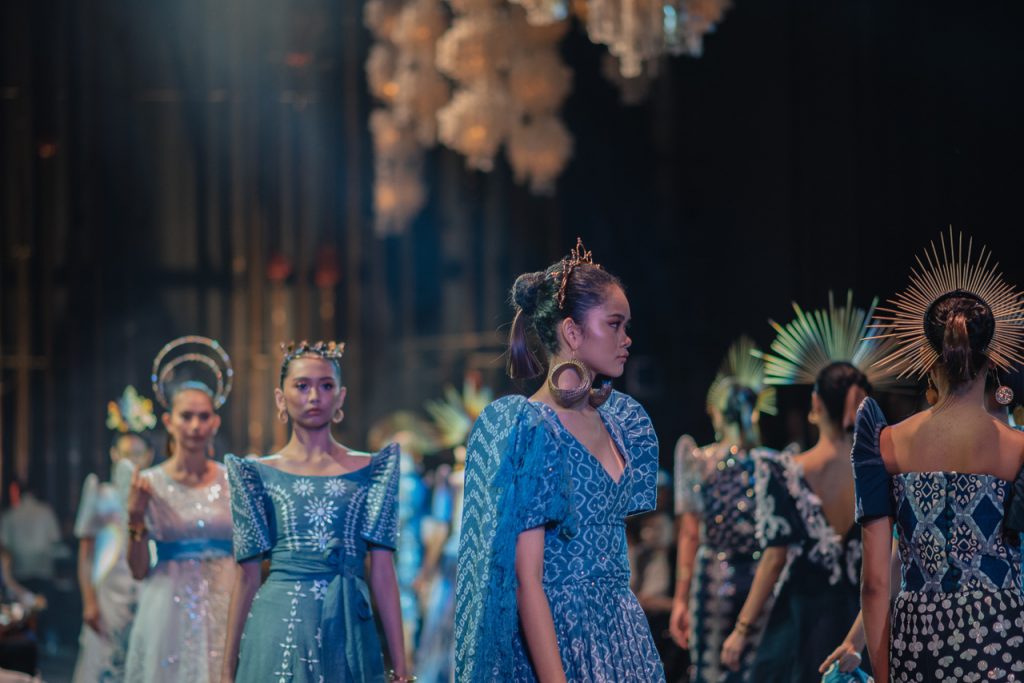
“It’s great to see the terno as day wear, and many of the bazaars are doing a wonderful job in promoting more casual versions of it,” he said. But that doesn’t mean contemporary designers are off the hook, especially as Gonzales is an utmost advocate of the terno and the traditional way of constructing it to a tee.
“I personally feel that it doesn’t work when designers try to tamper with the sleeves too much. And what for? Just to be known as the person who changed the terno sleeve? It’s too easy to play with the sleeves and be hailed as an innovative designer,” he said. “I think it’s actually a bigger challenge to keep the sleeve shape and make the dress look contemporary.”
In this interview, Gonzales illuminates the evolution of the terno from a prehispanic set of separates to an article of collective clothing composed of integral parts, to being a diminished symbol of national identity.
The traje de mestiza and the terno have evolved into many forms influenced by European fashion, the possibilities of women, or by mere suggestion of trends. What trends are we seeing in the construction of the Philippine dress today? Is it a goal of the Ternocon to innovate the terno or to just bring back the traditional way of making it?
Generally, the sleeves have become smaller in proportion over the last few years.
At TernoCon, it’s a constant conversation between mentors, contestants, technicians and the academe. There have been some cases where we actually encourage a contestant to see where he or she can take the form of the sleeves. Other times, we feel that sticking to its more traditional proportion would be better for the design of the contestant. It’s really a case to case situation. But we’re all unanimous that the “teacup” size of terno sleeves should be avoided at all costs.
“It’s a history of constant diminishment and it’s got to stop at some point. The butterfly sleeves are the only remaining component of the Philippine dress. So if you take it out or diminish its size any further, then you have nothing left.”
In your book, you went into detail about the efforts to revolutionize the terno, which ultimately subtracted some vital parts. You are especially critical of the butterfly sleeves and the futile attempts at reinventing it. Despite the fact that, of course, the sleeves we know today deviate wildly from the original bell-shaped voluminous sleeves of the traje de mestiza. In what ways could a designer butcher up the iconic butterfly sleeves and how does it affect the dress overall?
The butterfly sleeves of the 1920s were originally meant to be large and translucent. By the late 1930s, the sobrefalda or overskirt was removed. By the time we get to the 1940s, the pañuelo is subtracted. By the 1950s, the sleeves became solid, and the dress became a one-piece garment. In the 1960s and ’70s, the sleeves’ proportion started getting smaller. By the 2010s, we were faced with a “teacup” sleeve—a mere token gesture.
So you see, it’s a history of constant diminishment and it’s got to stop at some point. The butterfly sleeves are the only remaining component of the Philippine dress. So if you take it out or diminish its size any further, then you have nothing left.
View this post on InstagramA post shared by Philippine National Dress 🇵🇭 (@fashionable_filipinas) on
We’ve discussed briefly during the launch some misconceptions about the Filipino dress i.e. the misuse of the term Filipiniana as a fits-all term. Apart from that, what are other mistakes often made by designers or just any ordinary Filipino related to terno construction or terminology?
It’s strange when people refer to the traje de mestiza as “Maria Clara.” In the same way that calling the terno an “Imelda” sounds wrong. I guess people associate these silhouettes with particular characters or personalities, and it’s easier for them to give the garments certain monikers.
I’m also appalled by the way pañuelos are positioned in a crisscrossing manner. It looks very haphazard and unappealing. Ideally, pañuelos should be folded x number of times to achieve a certain proportion and crispness. And the tips should meet at the center like a perfect V shape.
The leg-of-mutton version of the terno sleeves is something that I’m also not fond of for the simple reason that it’s a Western silhouette. It took our ancestors decades to wean the sleeve shape off that 1890s trend in the West, so why take it back to that shape? Again, we do it because of our lack of understanding of our dress’ history. The leg-of-mutton dress really isn’t a Philippine terno.
We need to keep the sleeves upright with the proper fan-shaped pleating. It’s an innovation by the late Pacita Longos, one of the greatest Filipino designers. This shift from the voluminous sleeves of the traje de mestiza to the flattened butterfly sleeves of the terno is very important because it’s precisely this shape that sets it apart from the many Western sleeves. And this happened while we were trying to define ourselves as a nation during the Commonwealth period. That’s why it’s widely regarded as our National Dress in spite of the fact that there has never been a law to make it official.
[READ: The terno is not our national dress—but it could be]
The development and proliferation of the terno seemed to have stopped in the ’50s, where the history books are concerned at least, including yours (though there is a note there that explains why such is the case leading to the relegation of terno as a costume). Each decade leading up to that, saw improvements to the dress which, more or less, influenced the modern terno. What aspects, technologies, changes do you think this new era of renewed interest in terno can contribute to the literature and scholarly discussion of the Filipino dress?
It’s an interesting time, I believe. There’s renewed interest in the dress. And we are again trying to define what can be properly called a Philippine dress and what is not appropriate for a terno. At the same time, you have these emerging designers who are trying to define the terno for themselves and their generation. We try to remind them of the parameters, but they also need ample space to push it to a territory that can actually make the terno relevant for their time.
Social media has become an important tool as well. We introduced Instagram accounts to help people gain access to visual and literary resources, if they are interested in the terno and its origins. We’ve also linked up with like-minded individuals who help promote Filipino design and culture.
The dress, any kind of dress, from any part of the world is political. Our very own terno, can be seen as a way in which the Spanish controlled Filipino women’s bodies by instilling a sense of shame—the addition of pañuelo, for one, was done so to cover women’s body parts—by imposing a standard. How do we reconcile this problematic past of the terno with modern times that are more at peace with the liberties of women?
It depends on how you look at it. First of all, if you look at the Boxer Codex and the words that existed prior to the arrival of the Spaniards, many of these articles of clothing had already existed, albeit in a slightly different form. We already had the baru, saya, tapis, patadlog, etc. We also had a version of the kerchief called the tubatub. What may have happened after the Spaniards took control of the islands was a “refashioning” and recombination of all these articles of clothing to suit their ideas of modesty.
View this post on InstagramA post shared by Philippine National Dress 🇵🇭 (@fashionable_filipinas) on
And yes, there were many layers. But where else in the world can you find women in sheer, translucent clothing during the most conservative centuries in Western history? Yes, the women added on these layers, but they also refused to use the opaque textiles from the West. The traje was both an acceptance and a rejection of impositions from authority. So the assignment of a “colonial tool” on the dress may be an oversimplification. It was certainly much more than that.
For decades, women struggled with society to remove the pañuelo and open up their décolleté. And they were successful by the time Manila was liberated after World War 2. To an extent, the terno is actually an extant record of women’s successful struggles.
Today, as terno’s slits get higher and higher, and necklines plunge farther down, I don’t know if imposed modesty is still an issue.
The bigger issue is the arm’s mobility underneath the butterfly sleeve, which still needs to be addressed technically. Women today are used to athleisure, which are casual, comfortable clothing designed to be suitable for both exercise and everyday wear. So when they wear a terno for the first time, they normally complain about the armhole.
The terno was made to convey social status. Is it still true today? Is part of reintroducing the terno breaking its connotations of class?
The terno was worn by all social classes and females of all ages up until the early 1940s. Of course, the privileged classes wore more elaborate versions, but the essential shapes were practically the same. So the terno belonged to everyone from the onset. Women in the exclusive clubs wore it. And women working in the market places wore it as well.
View this post on InstagramA post shared by Philippine National Dress 🇵🇭 (@fashionable_filipinas) on
Part of the movement was the introduction of a denim terno top by Bench’s Pinoy Lab. It’s a more affordable and casual version of the terno created by a mass brand. So far it’s been selling out, so it’s a good indication of acceptance.
What Inno Sotto as Chief Mentor has been trying to do is to shift the mindset of the emerging designers away from the instinct to make the terno a “bongga” pageant outfit. Because that immediately relegates the terno as festival costume and limits its usage to such events. He encourages them to think of women and their needs.
Speaking of connotations. Is it possible that Filipinos dissociated—and continues to do so—with the formal dress because of the symbols, images, and even personalities attached to it? Some, for example, as former President Corazon Aquino did succeeding the dictatorship, veered away from the terno-donning image of Imelda Marcos, and others see the excessive, nay superficial, display of wealth at the State of the Nation Address red carpet as reeking of corruption and misgovernance. Do you agree and think that this may be one of the reasons why the terno has fallen out of favor in the last few decades? And then subsequently, through the pull of aspirational motivation from new role models and influencers in recent years, younger Filipinos are attracted to it?
Yes, it certainly had an effect on the usage of the terno. After the President Cory Aquino period, it was former First Lady Ming Ramos, who started using the terno again beginning with the inauguration of her husband, Fidel Ramos. But by that time, hardly anyone was using the terno and this trend continued for many more years until we got to the 2000s when we started seeing badly-constructed ternos possibly as a result of a younger generation of designers not actually seeing real people in ternos and not having practiced the construction of ternos.
View this post on InstagramA post shared by Philippine National Dress 🇵🇭 (@fashionable_filipinas) on
I think the role of influencers is inevitably an important one. That’s why it’s good for younger Filipinas to see their favorite celebrities wearing the terno at some point. Bench plays a crucial role here as well because it has been at the forefront of dressing its female celebrity endorsers in ternos when possible.
There were some sensible ternos at the last SONA compared to previous years. I guess a few designers and women at the State function are learning. But it’s too soon to assess whether these had actual effects on the public’s perception of the terno.
The very premise of the TernoCon came from your realization that coming up with a book about the Philippine dress is not enough to educate the public about it. After a successful run of TernoCon and an on-going one, do you think public understanding has improved? Otherwise, what are some projects you have in the pipeline to further this advocacy?
A few years ago, when you key in the hashtag #philippineterno on Instagram, you’d probably see less than five images. Now there are over 1,000 entries. It’s still a very tiny fraction. However, along with vintage photographs, images of Filipinas as far as California will occasionally come up. And that for me is a huge shift. From being totally clueless about the Philippine dress and not wanting to be dressed in a terno, we have seen more women in ternos outside the context of TernoCon. And if ternos are now being bought at Bench, Artefino, Maarte, Katutubo, and all the other bazaars then the situation must be improving.
The next project we are looking into as well is to produce a second volume of “Fashionable Filipinas” book.
Get more stories like this by subscribing to our weekly newsletter here.
Read more:
The terno is not dead. But new designers are killing it
The terno is not our national dress—but it could be
The pitfalls of reimagining the baro’t saya
Writer: CHRISTIAN SAN JOSE
ART CLARISSE ALFONSO


